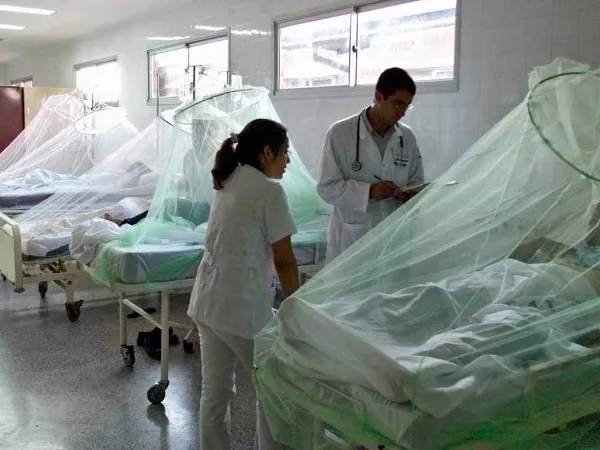A surge in cases and deaths from dengue fever is affecting Quintana Roo and the Yucatán Peninsula, with increased reports in central Mexican states such as Morelos and Puebla as well.
In response to the emergency, schools in Yucatán have suspended classes to fumigate classrooms and protect students and teachers. Additionally, the Ministry of Health initiated an additional fumigation campaign in municipalities and neighborhoods starting on October 1.
According to national records from the Ministry of Health, as of September 28, the end of epidemiological week 38, the number of cases had tripled compared to the same period in 2022, rising from 5,577 cases to 23,241.
Meanwhile, deaths increased from 14 to 48 during the same period, representing a 242 percent increase.
Out of the national total, Yucatán accounts for a quarter of the cases with 5,780, while Quintana Roo has 3,076.
Veracruz is another alarming case with 4,625 cases by the end of September. However, other southeastern states like Chiapas have also issued alerts.
Recently, Governor Rutilio Escandón stated that there is an unusually high reproduction rate of the dengue-transmitting mosquito in southeastern Mexico and Central America.
Furthermore, central Mexican states are reporting historically high numbers. For example, Morelos currently ranks fourth nationally with 1,769 cases, and Puebla ranks fifth with 1,653 infections.
An international study cited last week by The New York Times warned of a widespread increase in disease-transmitting mosquitoes worldwide that have become resistant to chemicals used in fumigation processes.
In late August, the Ministry of Health issued an epidemiological alert due to the increase in dengue cases, emphasizing that it is the country’s primary vector-borne disease, and there has been an increase in cases and incidence in recent years.
Héctor Gomez-Dantés, an expert in dengue research, explained that the growth in transmission in the country is related to the decrease during the Covid-19 emergency due to reduced interaction, mobility, and activity of people. This led to an accumulation of susceptible individuals during the pandemic years.
Furthermore, the dengue serotype three currently predominates, and the Mexican population was not as exposed to it in the past, making it more susceptible to infection.
The specialist from the National Institute of Public Health clarified that transmission is circulating more or less in two-thirds of the country, but predominantly in the south-southeast of Mexico.
According to the expert, who noted that his personal opinions have nothing to do with the institution he works for, there is no army of technicians covering the entire country for vector control, with the mosquito Aedes aegypti, applying insecticides or larvicides in breeding sites, which can be found anywhere water accumulates.
“It’s not an easy task, it never has been, and the Ministry of Health always struggles to try to apply it in areas where transmission is occurring to act more promptly. However, the mosquito always outpaces us because it reproduces very quickly,” he explained.
According to the specialist, the efforts made by the Ministry of Health are insufficient because the scenario is vast.
“The problem is so large that we don’t have the human resources to cover large urban centers with the regularity and extent required,” he asserted. “There are rapid response teams and control teams that try to contain transmission, but it’s definitely not enough to eliminate it, and the mosquito, with any lapse, wins.”
TYT Newsroom


